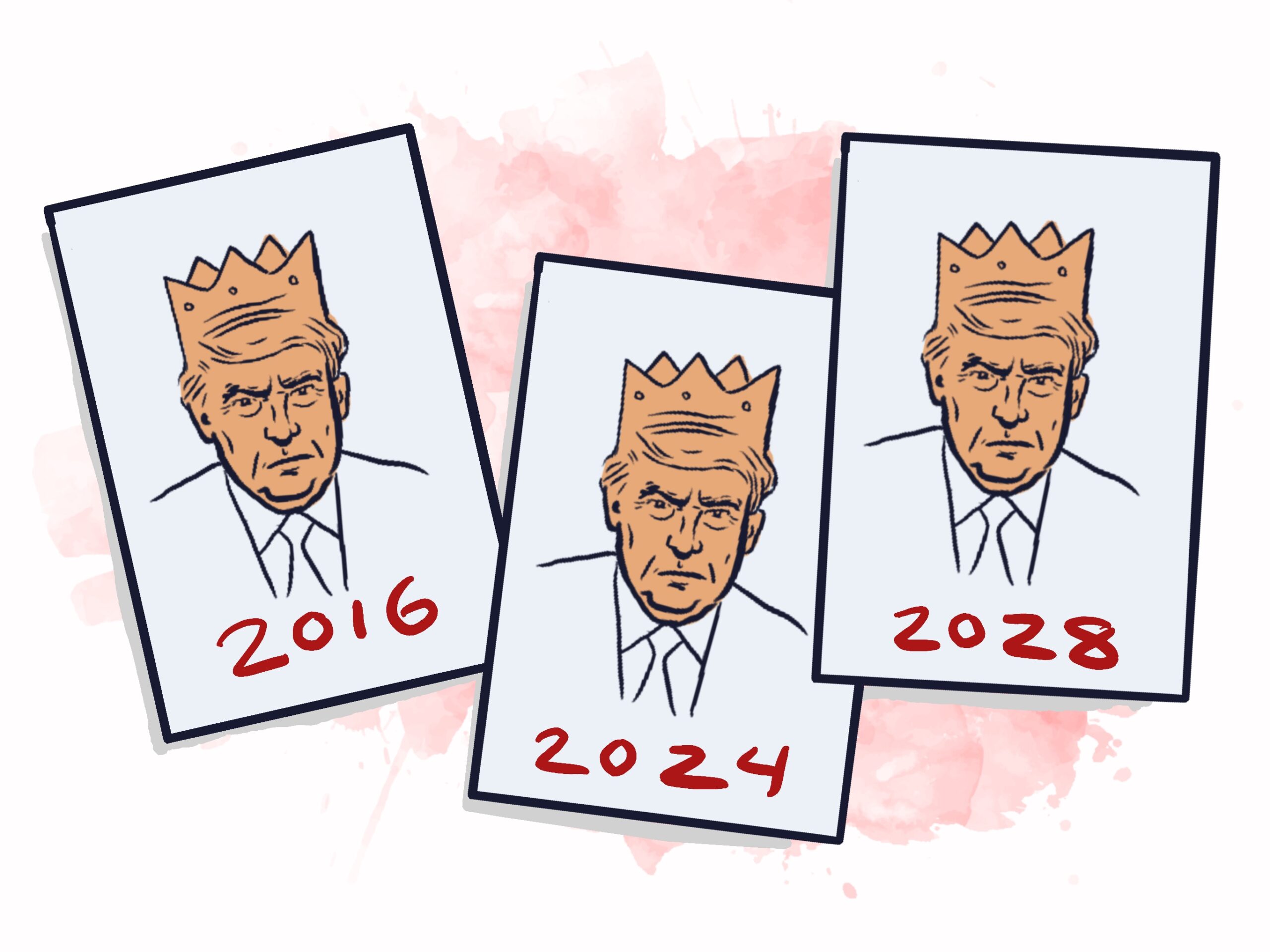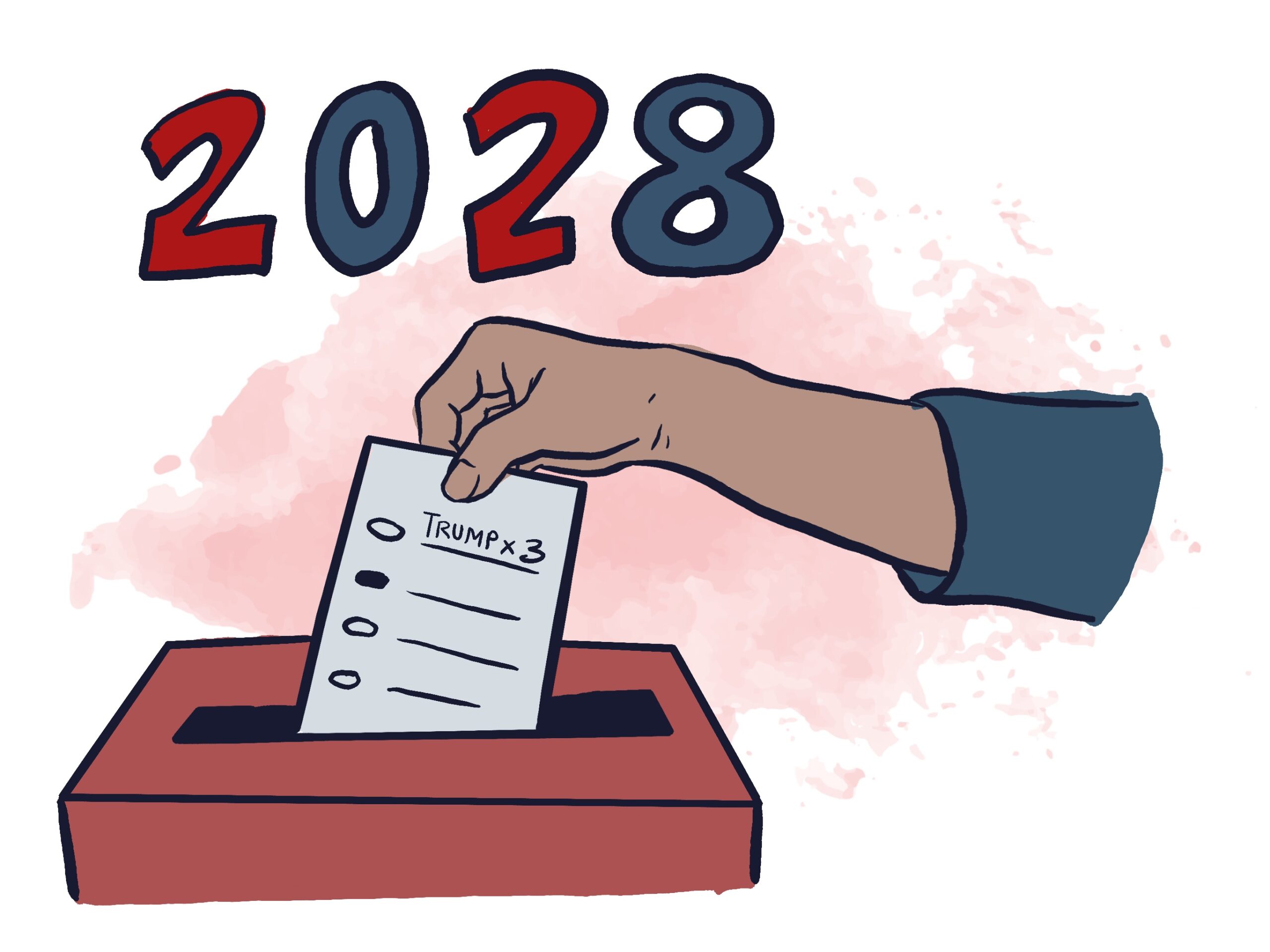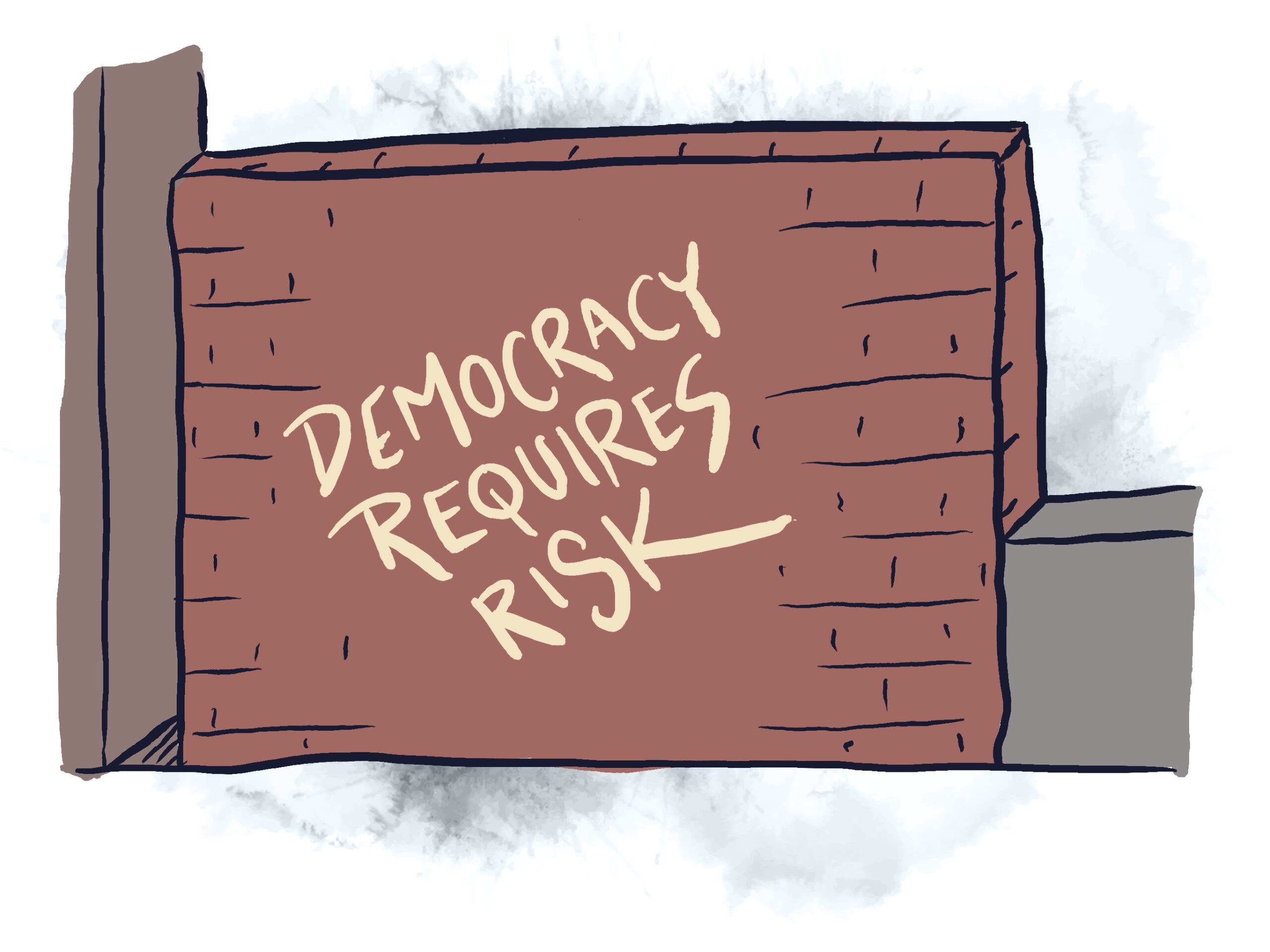You decide not to meet. There’s so much to work on. You dive back into your work. It’s not until a picnic with your friends that you remember the call. You’re with friends on the U.S. Semiquincentennial — July 4, 2026 — marking 250 years since the Declaration of Independence. Someone idly shares, “You hear about the leaders of the Resistance getting arrested and beaten up?” Your ears perk up a little.


With the movement fractured, Trump moves to stay in power. He invokes sketchy emergency orders to “temporarily suspend the 22nd Amendment.” Desperate, parts of the disobedience wing of the resistance movement try to mount a one-day strike. Sadly, they aren’t able to build a broad coalition. They just never grow fast enough. You realize you could have helped. You were protecting your people and your work — but the situation was too dire.
Trump jams the courts with challenges. By election season, election workers, police, courts, politicians, and the military are all given conflicting orders. Without any clear strategy to resist and no viable alternative, most individuals take the path of least resistance — and put Trump on the ballot. You try to get your groups to take risks, but they aren’t ready. He wins a heavily biased election.


During the long years of Trump’s regime, a piece of graffiti scrawled on a wall speaks to you. It simply says, “Democracy Requires Risk.” You realize that you did fantastic work for the people you impacted — but that you didn’t teach them how to resist wrongful orders. So when it came to it, they just weren’t ready. You get your people ready. You resolve to be ready to join up with the disobedience wing next time.
THE END.
You didn’t win this time. Luckily, this is just a game. In this situation, we’re gonna face a moment when groups who are protecting people and defending institutions have to switch up their approach. We’ll have to expose our groups to greater risk. We’ll have to risk our organizations’ existence. We’ll have to take great personal risks — otherwise the movement will fail.
Read Closing Thoughts from the author.
